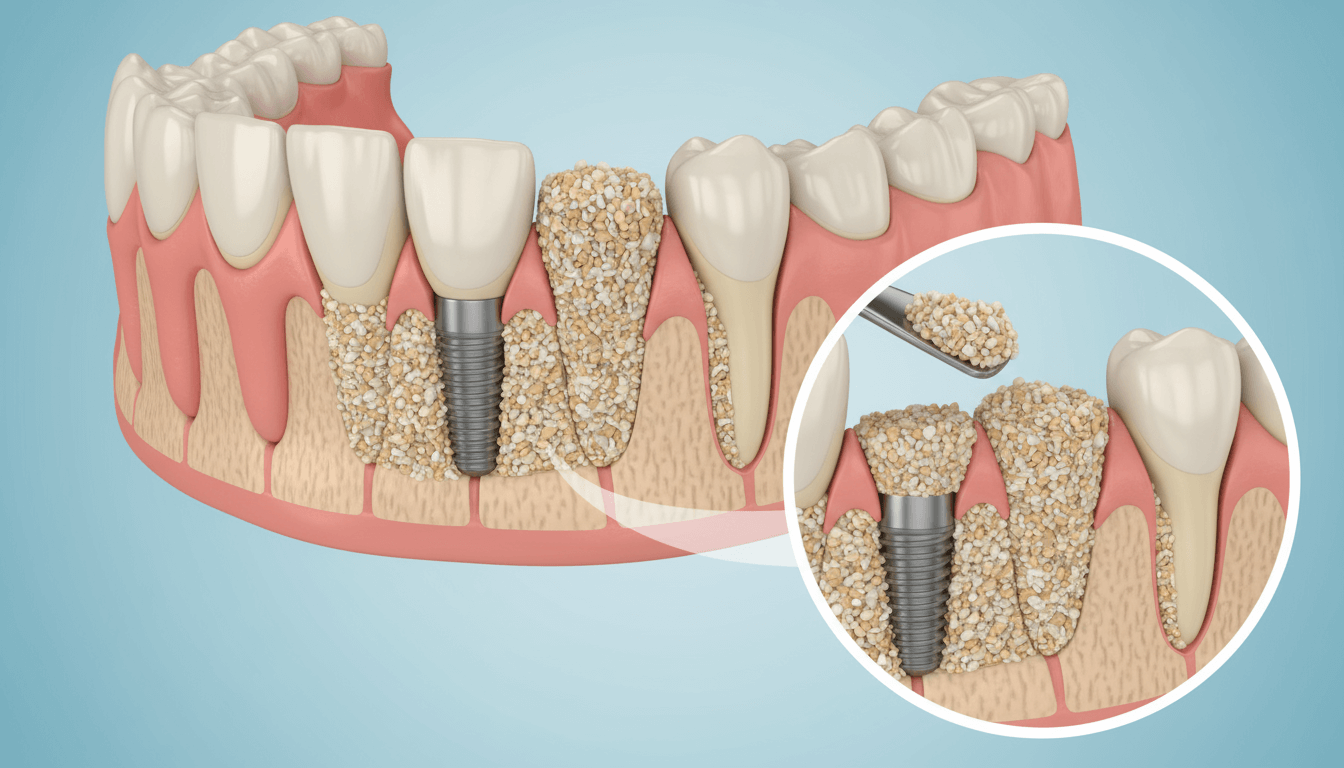Bone Graft for Dental Implants: Why It’s Needed and What to Expect Before Treatment

While having a bone graft for dental implantssounds quite scary, and you may be worried it will hurt, there is nothing to fear. Like any dental treatment, you’re likely to feel more confident about going ahead once you know what to expect.
One of the criteria for getting dental implants is that a person has sufficient healthy bone in their jaw. Like natural teeth, dental implants rely on support from the bone as they are placed directly into the jawbone.
Over time, the surrounding bone fuses with the implant (osseointegration), giving it the strength to support a prosthetic tooth or dental crown. If a patient has lost more than one tooth, an implant-supported bridge or denture can be used to replace them.
Before we get into the ins and outs of bone grafting, let’s talk about why bone loss occurs and why your dentist may have recommended a bone graft for dental implants.
Why Bone Loss Happens and Why a Bone Graft is Needed
When you lose a tooth, the body begins to resorb the surrounding bone because it perceives it as no longer needed. Unfortunately, and particularly with widespread tooth loss, this causes the jaw to undergo a change in shape. Over time, the face takes on a hollow, sunken look that makes a person look years older than they are.
It would be foolish for a dentist to insert a dental implant into a site with insufficient bone. Doing so would increase the risk of implant failure, as the implant requires sufficient, healthy bone to thrive – hence the need for a bone graft for dental implants.
The Purpose of a Bone Graft
A bone graft enables your dentist to restore or replace missing bone so that your dental implant can be placed accurately and securely. By reinforcing the jawbone, the graft gives your implant the best chance of long-term success.
In fact, studies show that dental implants placed in properly grafted bone have success rates comparable to implants placed in natural, healthy bone.
Without a graft, implants may loosen, fail to integrate, or cause complications. Think of a bone graft as laying down a strong foundation before building a house – it ensures everything placed on top is secure.
Types of Bone Graft for Dental Implants
There are various types of bone grafts available, and your dentist will determine what’s right for you.
A socket bone graft is used immediately after a tooth is extracted, paving the way should a person require a dental implant at a future date.
Another form of bone graft is a sinus lift. Sinus lifting is needed to create more room in the sinus chamber when receiving dental implants in the upper jaw.
Finally, a ridge modification replaces bone loss that may have occurred in the upper or lower jaw due to dentures placing pressure on the bony ridge.
Where Does the Bone Come From?
There are several sources of bone grafting materials. An autograft uses bone taken from another part of your body, often your jaw. Many dentists prefer this method because it utilises your own cells, which aids in healing and integration.
Other options include synthetic bone grafts (also known as alloplastic materials) or donor bone from safe, regulated sources. These alternatives are often recommended when patients prefer not to undergo an additional procedure to harvest their own bone.
What is the Bone Graft Procedure Before a Dental Implant?
- X-rays and CT scans determine the depth of your bone, as well as the size and type of graft and grafting material to use.
- Minor bone grafts are performed in the dentist’s chair under a local anaesthetic. Larger, more complex grafts will be carried out in a hospital setting.
- An incision is made in the gums above the implant site. The grafting material is inserted and covered with a membrane to protect it and promote new growth. The gums are then closed with sutures.
Healing and Recovery

It takes between 3 and 6 months for the graft to heal and integrate with your natural bone before you can go ahead with dental implants. During this time, your West Ryde dentist will monitor healing and may give you aftercare instructions such as:
- Avoid pressure or chewing directly on the graft site.
- Consuming a soft diet while the body is recovering.
- Maintaining excellent oral hygiene to prevent infection.
- Going to follow-up appointments so your West Ryde dentist can assess your progress.
Patience is key – while waiting may feel inconvenient, proper healing significantly improves the long-term stability and success of your dental implant.
Bone Grafting in West Ryde
If the thought of a bone graft has put you off the idea of a dental implant, then, hopefully, knowing more about the bone grafting procedure may give you the motivation to move forward.
If you need more information about a bone graft or dental implants, don’t hesitate to contact the My Local Dentists team on (02) 9809 7000 or book your online appointment to get your FREE dental implant consultation today.
Visit us at Shop 20, West Ryde Marketplace, 14 Anthony Road in West Ryde.
